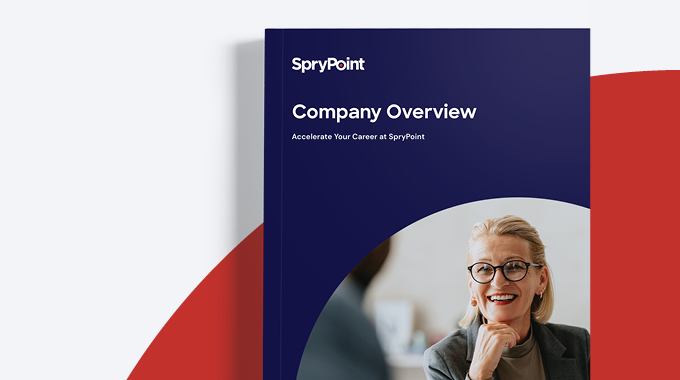You can invest in the best technology on the market, but if your people aren’t on board, it won’t deliver. That’s why many modernization projects struggle. It’s not because the software isn’t capable, but because organizational change management (OCM) wasn’t prioritized early enough.
The real work of digital transformation starts with people, not just platforms. Modern utilities face more than just technical upgrades. They’re evolving how teams work, communicate, and serve their customers. Such a shift introduces uncertainty, disrupts routines, and often meets resistance—even when the end goal is improvement.
That’s why successful modernization demands a plan for managing the people’s side of change.
Even the most advanced platform will fall flat without a clear plan for helping your team adapt. Utilities that invest in OCM up front are better equipped to overcome resistance, align their staff, and maintain momentum throughout the rollout.
So what gets in the way of effective change? Based on our work with utilities across North America, here are the most common road blocks we see:
- Confusion around why the change is happening (or necessary)
- Resistance from users who fear disruption of tried and true processes, or past changes that haven’t gone well within the org
- Executive leadership that delegates the project but doesn’t stay visible
- Lack of digital-skills confidence (especially when asking staff to learn new tools like tablets)
- Processes trapped in someone’s head instead of being documented
- Silos between customer service, billing, and field teams
- Training that treats every group the same, even though their needs differ
Any one of these issues can stall your rollout. Together, they can derail it completely. That’s where OCM comes in.
What Effective Organizational Change Management (OCM) Looks Like
1. Conduct a Holistic Assessment
Every successful transformation begins with a clear understanding of where you’re starting and what could get in the way. That’s why many utilities benefit from conducting a holistic assessment that looks at both the structure of the project and the human factors that influence success. This includes evaluating leadership alignment, review of success metrics, organizational readiness for change, and any potential risks or roadblocks ahead. By bringing these pieces together early in the process, you’re building a more realistic strategy and creating more clarity upfront.
2. Ensure Leadership Sponsorship
Leadership plays a crucial role in the success of change. In fact, research shows that when leaders are visible, vocal, and actively engaged, project outcomes improve significantly. That’s why many utilities choose to identify key sponsors early and give them the tools and support needed to champion the initiative. A sponsor’s job is to communicate the vision and build trust through consistent engagement.
3. Create a Core Organizational Change Management (OCM) Team
While executive sponsors provide essential visibility and momentum, they can’t manage the day-to-day lift of change alone. That’s where a core OCM team comes in. This cross-functional group of aligned leaders plays a critical role in guiding the project forward. They help assess the impact of change on different user groups, translate strategy into action, and ensure feedback from the frontlines is heard and acted on. The most successful transformations we’ve seen have this dedicated team to bridge the gap between leadership and end users.
4. Conduct a Group Impact Assessment
No two teams interact with systems in the same way. We’ve seen utilities find success by mapping out how the change will affect each group (customer service, field teams, billing, and more). This type of analysis helps identify your internal influencers and pinpoint areas where communication, training, or workflow adjustments may be necessary. Plus, tailoring your approach and training to each group builds stronger engagement and smoother adoption.
5. Survey for Sponsorship and End-User Insights
Regular feedback is key. Tools like sponsorship surveys help teams track how change is being received across the organization. These insights can guide leadership communications, flag potential resistance early, and identify opportunities to enhance adoption efforts.
6. Hold Hands-On Workshops
Training and testing isn’t a one-and-done activity. It’s most effective when it’s interactive, role-specific, and timed to align with real workflows. We’ve seen utilities gain traction by offering job-specific workshops, process mapping sessions, and live system walkthroughs. These sessions not only increase confidence and buy-in, they also help surface knowledge gaps, and create documentation that supports future onboarding.
Change That Lasts Starts with People Who Feel Prepared
When utilities adopt a formal OCM strategy, they reduce risk, increase speed of adoption, and set their teams up for long-term success. And every great journey includes a guide. Here is what a recent client shared about SpryPoint as:
“We are excited to enable better, smarter services for our customers, and work closely with SpryPoint as a partner in this critical transformation initiative. SpryPoint’s ease of use, flexibility, and powerful features made it the clear choice for our team.”
— Amy Bennett, Finance & Admin Division Manager, City of Gainesville
By the time you go live, your people should feel empowered. They should understand the why behind the change and they should see their feedback incorporated. An established change management framework can help you make that a reality.
If you need help, SpryPoint can make updating your systems easier for everyone involved.
Schedule a conversation with our team here.




